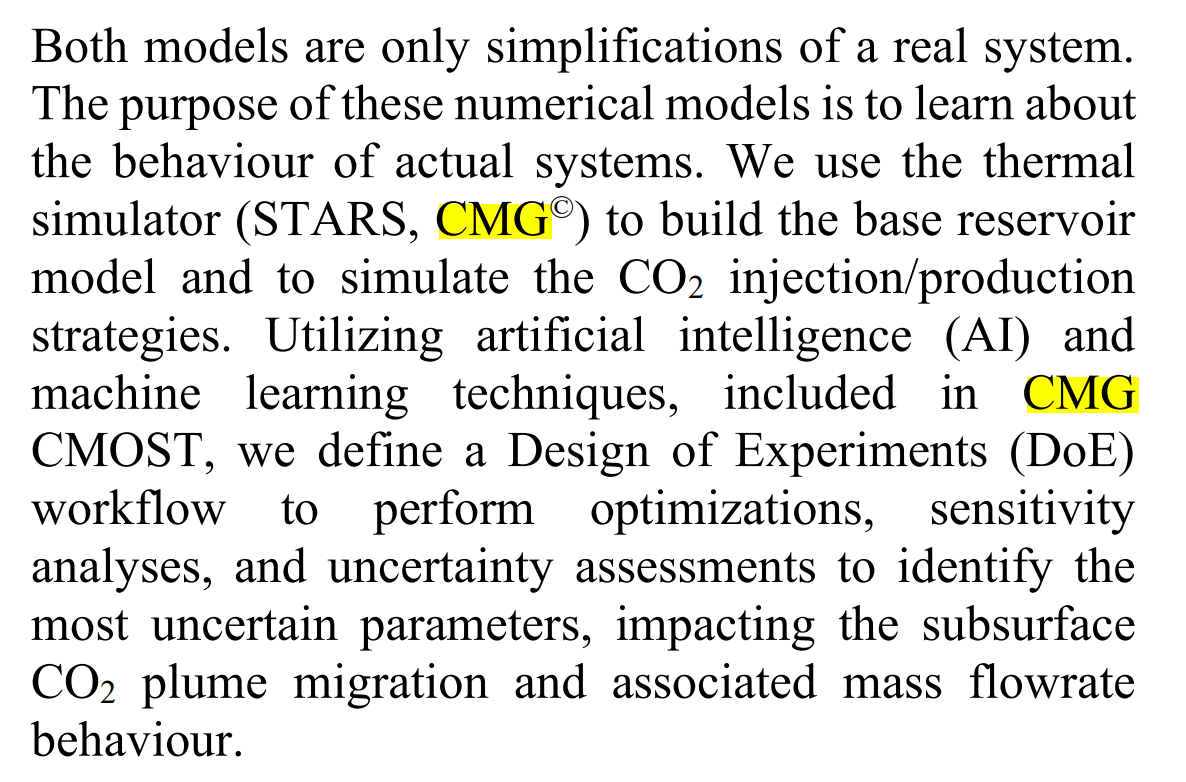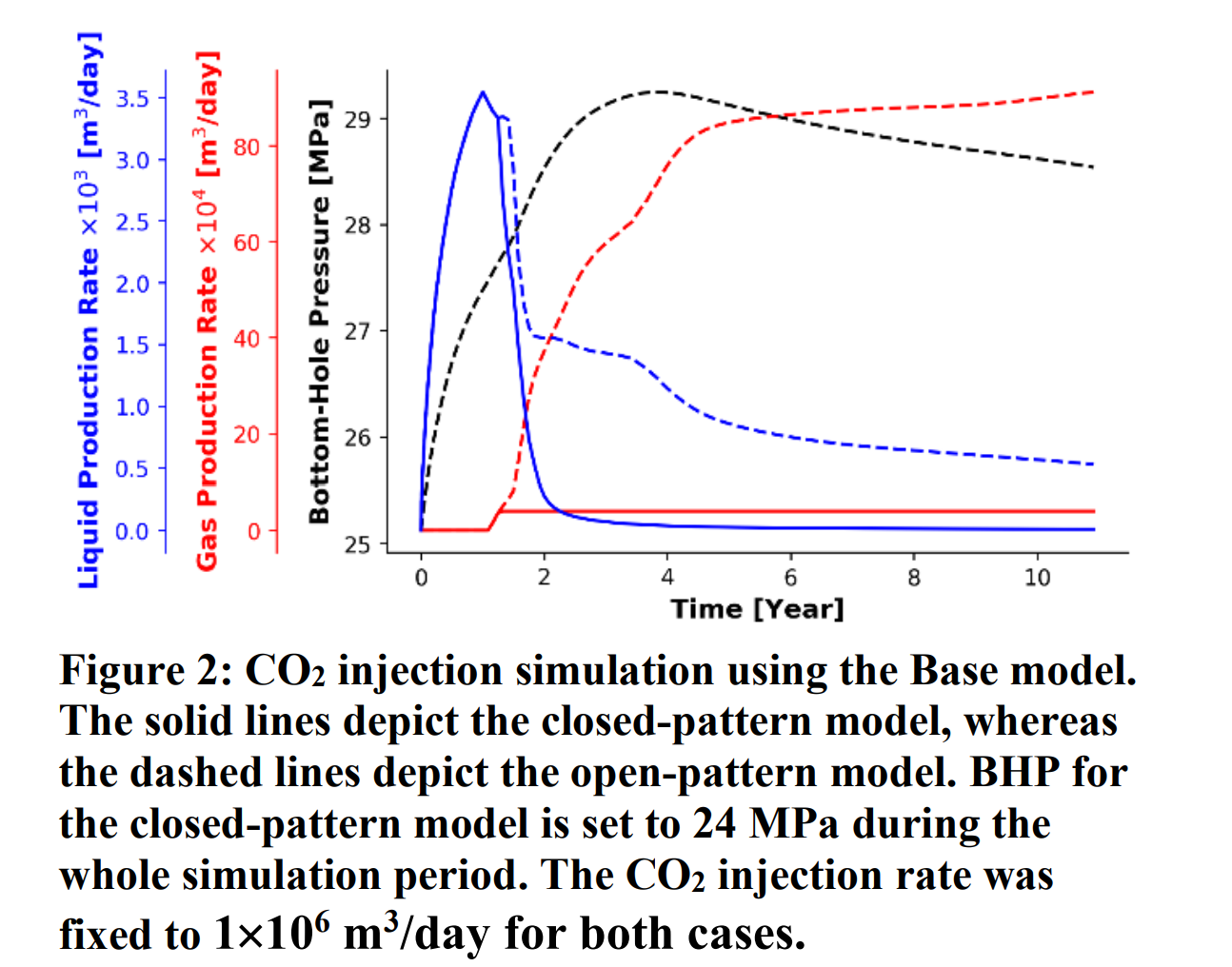Optimizing fluid(s) circulation in a CO2-based geothermal system for cost-effective electricity generation
ABSTRACT
Carbon Capture and permanent geologic Storage (CCS) can be utilized (U) to generate electrical power from low- to medium-enthalpy geothermal systems in so called CO2-Plume Geothermal (CPG) power plants. The process of electrical power generation entails a closed circulation of the captured CO2 between the deep underground geological formation (where the CO2 is naturally geothermally heated) and the surface power plant (where the CO2 is expanded in a turbine to generate electricity, cooled, compressed, and then combined with the CO2 stream, from a CO2 emitter, before it is reinjected into the subsurface reservoir).
In this research, initially a comprehensive technoeconomic method (Adams et al., 2021), which coupled the surface power plant and the subsurface reservoirs, supplies the curves for CO2-based geothermal power potential and its Levelized Cost of Electricity (LCOE) as a function of the mass flowrate. This way, the optimal mass flowrate can be determined, which depends on the wellbore configuration and reservoir properties. However, the method does not account for the possibility of unwanted water accumulation in the production wells (liquid loading).
In order to account for this in the optimization process, a wellbore reservoir coupling is necessary. In this research, flow of fluids from the geological formation into the production wellbores has been analysed by optimizing the reservoir modelling. The optimization method has been extended to a set of representative geological realizations (500+). The optimal CO2 mass flowrate provided using genGEO, which maximizes net-electrical power output while minimizing LCOE, can now be related to the risk of liquid loading occurring. Additionally, the resultant reservoir model can forecast the CO2-plume migration, the reservoir pressure streamlines among the wellbores, and the CO2 saturation around the production wellbore(s).




